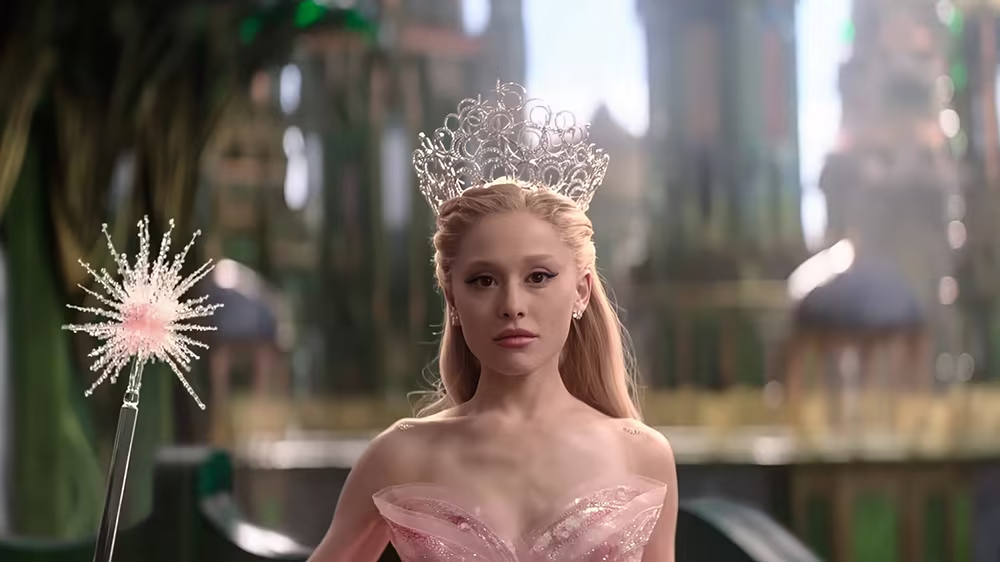The Strategy Confirmed: Why Splitting ‘Wicked’ into Two Films Was a Masterstroke
When Universal Pictures announced the decision to adapt the beloved Broadway musical Wicked into two separate cinematic events, the move was met with significant skepticism across Hollywood. Splitting a single narrative into multiple films is a high-stakes gamble, often criticized as a cynical attempt to maximize revenue. However, with the phenomenal box office performance and critical reception of Wicked Part One, released in late 2024, the studio’s ambitious strategy has been definitively validated.
The film, directed by Jon M. Chu, proved that the audience appetite for the Land of Oz prequel was strong enough to support a bifurcated narrative. The initial success of Part One not only secured the financial viability of the entire franchise but also established a crucial precedent for adapting complex, long-form stage musicals. The gamble, which involved doubling the production and marketing costs associated with a single film, has paid off handsomely, positioning Wicked as one of the most successful musical adaptations of the 21st century.
The High-Stakes Decision: Creative Necessity Meets Financial Opportunity
The original stage production of Wicked, based on Gregory Maguire’s novel, is famously dense, featuring a sprawling narrative, complex character arcs for Elphaba (Cynthia Erivo) and Glinda (Ariana Grande), and a two-act structure that runs nearly three hours. Director Jon M. Chu and the creative team consistently argued that compressing the story into a standard two-hour feature would necessitate severe cuts to Stephen Schwartz’s iconic score and the intricate plot.
The Rationale for the Split
The decision to release the films in successive years (Part One in 2024 and Part Two scheduled for late 2025) was driven by both creative preservation and business optimization:
- Preserving the Score: The filmmakers insisted on using the majority of the original musical numbers, many of which are essential to character development. Splitting the story allowed for the inclusion of fan-favorite songs that otherwise would have been cut for time.
- Narrative Integrity: The first half of the stage show builds slowly, establishing the relationship between Elphaba and Glinda at Shiz University. Rushing this foundational material would have undermined the emotional payoff of the second act, which focuses on Elphaba’s transformation into the Wicked Witch of the West.
- Maximizing Revenue: From a business perspective, two films mean two separate theatrical runs, two distinct marketing campaigns, and two opportunities to charge premium ticket prices. This effectively doubles the potential gross revenue from the property.

Box Office Validation: A New Tentpole Franchise
While specific financial figures are proprietary, industry analysis confirms that the global box office haul for Wicked Part One significantly exceeded initial conservative projections. This success is critical because it validates the substantial investment Universal made in production and in P&A (prints and advertising) costs, which are incurred twice for a two-part release.
Comparing the Strategy to Precedents
Hollywood has a mixed history with splitting final installments. While franchises like Harry Potter (Deathly Hallows) and The Twilight Saga (Breaking Dawn) saw massive financial boosts by dividing their final books, the strategy has also faced backlash when the split felt purely commercial rather than creatively justified (as seen in some young adult adaptations).
Wicked‘s success demonstrates that audiences are willing to embrace the split when they perceive the source material is being respected and when the quality of the first installment is high. The film successfully captured the magic of the stage show, drawing in both dedicated ‘Fiyero’ fans and general moviegoers.

Financial Implications for Universal
The success of Part One transforms the entire Wicked property into a guaranteed tentpole release for 2025. This provides Universal with a reliable, high-grossing asset in a year where competition for major cinematic events is fierce. Furthermore, the success drives up the value of ancillary revenue streams, including:
- Streaming Rights: Enhanced licensing fees for the eventual streaming release of both films.
- Soundtrack Sales: Renewed interest in the original and new songs, driving music sales.
- Merchandising: Increased demand for Wicked-themed products and tie-ins.
Setting the Stage for the Grand Finale
The narrative structure of Part One ended precisely where the first act of the stage show concludes—with Elphaba’s iconic transformation and the powerful song, “Defying Gravity.” This cliffhanger ending was crucial to ensuring audience commitment to the 2025 sequel, Wicked Part Two.
By ending on such a high note, the filmmakers successfully leveraged the inherent drama of the source material to create a compelling reason for viewers to return. Unlike some split films where the first half felt like padding, Wicked Part One delivered a complete, satisfying story arc while leaving the most dramatic events—the confrontation with the Wizard, the love triangle, and the ultimate fate of the characters—for the conclusion.

This deliberate pacing allows Part Two to focus entirely on the dramatic climax, ensuring that the final installment will be a high-octane, emotionally charged conclusion that justifies the audience’s long-term investment.
Key Takeaways: The Legacy of the Split
Universal’s handling of Wicked offers a blueprint for adapting complex, beloved source material in the blockbuster era. The success confirms that creative integrity and commercial viability are not mutually exclusive when dealing with established IP.
- Risk Justified: The initial financial risk of doubling production costs was justified by the massive global gross of Wicked Part One.
- Creative Preservation: Splitting the film allowed Director Jon M. Chu to retain the majority of Stephen Schwartz’s score and the intricate narrative structure, satisfying dedicated fans.
- Franchise Building: The two-part release successfully transformed a single musical adaptation into a multi-year, guaranteed tentpole franchise for Universal Pictures.
- Audience Commitment: The strategic cliffhanger ending of Part One ensures high audience turnout for the conclusion, Wicked Part Two, scheduled for late 2025.
Conclusion: A New Standard for Musical Adaptations
The success of Wicked Part One is more than just a box office win; it’s a strategic victory for Universal and a creative triumph for the filmmakers. It proves that when adapting a cultural phenomenon, prioritizing the integrity of the source material—even if it means a more expensive, multi-part release—can lead to superior financial returns and higher audience satisfaction. As Hollywood continues to mine established intellectual property, the Wicked model will likely be studied closely as the new standard for turning sprawling stage narratives into cinematic blockbusters.
Original author: Rebecca Rubin
Originally published: November 24, 2025
Editorial note: Our team reviewed and enhanced this coverage with AI-assisted tools and human editing to add helpful context while preserving verified facts and quotations from the original source.
We encourage you to consult the publisher above for the complete report and to reach out if you spot inaccuracies or compliance concerns.

